The physical object which is able to
detect events and changes in various parameters such as environment,
temperature, humidity, and so on are termed as sensors. Based on the
(events or) changes detected the sensors are capable of generating
appropriate output. There are different types of sensors classified
based on different criteria such as sound, automotive, electrical,
chemical and so on. Most frequently used sensors can be listed as pressure, force, proximity, light, heat, temperature, position, etc.
Sensor Technology
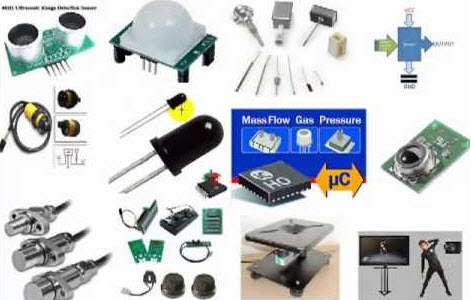
Various types of Sensors
The application of sensors
in real time electrical and electronic circuits for developing various
innovative projects is rapidly increasing. For instance, consider an automatic door opening system frequently used in shopping malls, offices, banks, and other places which will work based on proximity sensor. Similarly, application of sensor technology in various fields like embedded systems, robotics, etc., is rapidly increasing. Here, in this article let us discuss about force sensing resistor.
Force Sensing Resistor
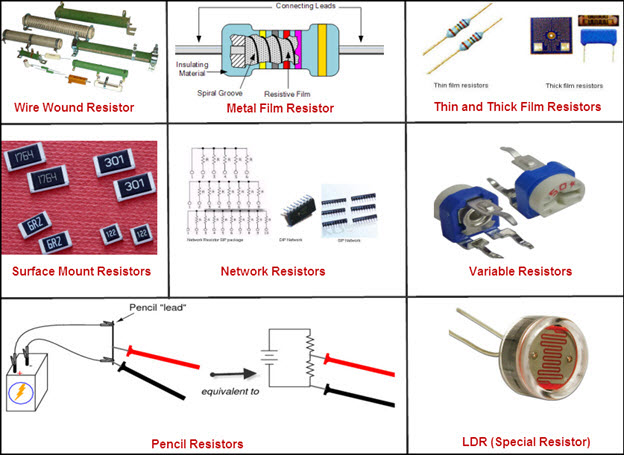
Various Types of Resistors
Resistor is one of the most typically used passive components in electrical and electronics circuits.
Resistor can be defined as a circuit element used for reducing current
flow and also lower voltage levels in circuits. There are different types of resistors
classified based on various criteria such as fixed value resistors,
variable resistors, wire wound resistors, metal film resistors and
special resistors. The special purpose resistors can be listed as pencil
resistors, light dependent resistors, force sensing resistors and so
on.
Recommended Read: Resistance Calculator using a Simple Resistor Color Code Calculator.
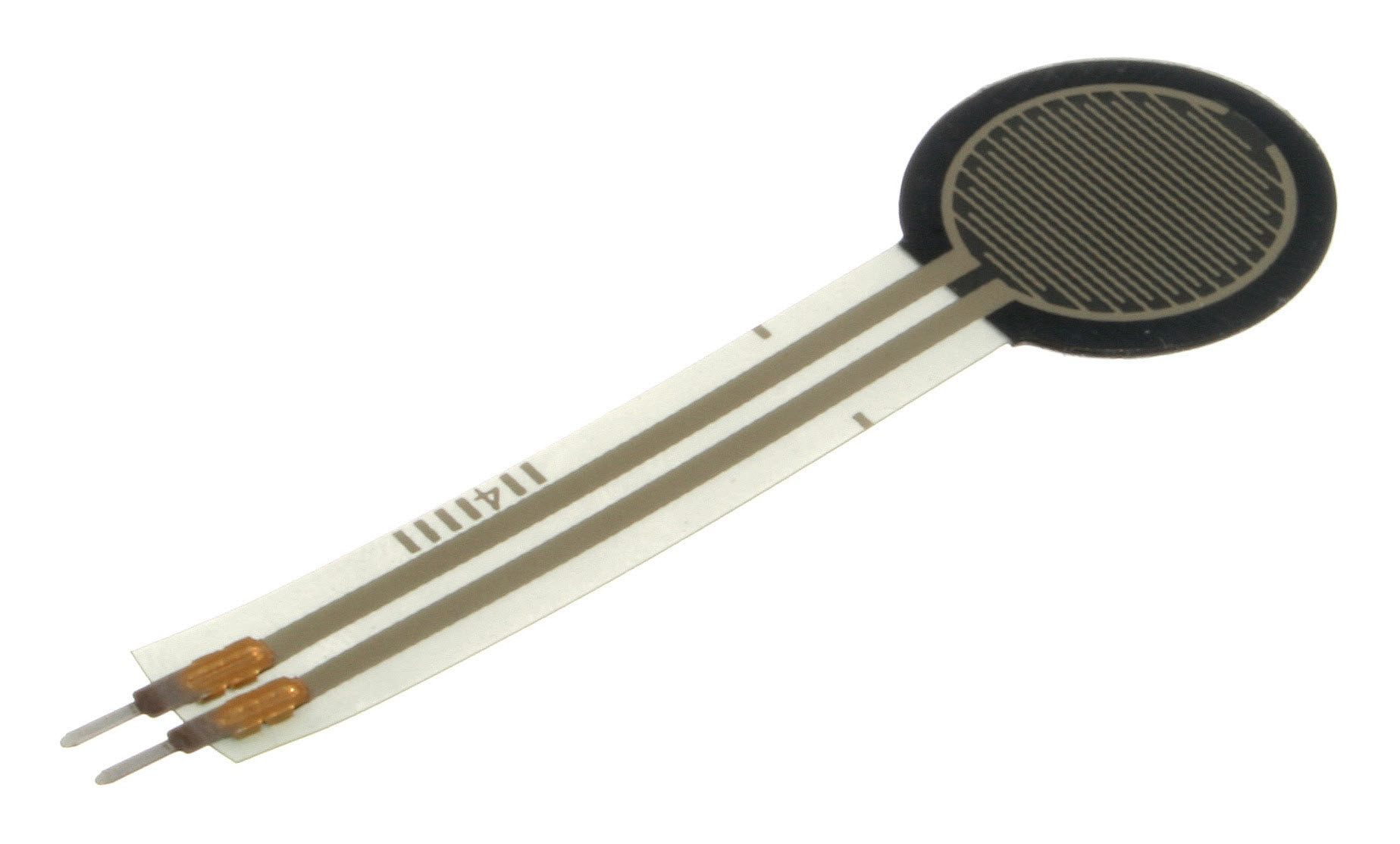
Force Sensing Resistor
Force sensing resistor can be defined as
a special type of resistor whose resistance can be varied by varying
the force or pressure applied to it. The FSR sensor technology was
invented & patented by Franklin Eventoff in 1977. The FSR sensors
are made of conductive polymer which has a property of changing its
resistance based on the force applied to its surface. Hence, these are
termed as FSR sensors, force sensing resistor is a combination of
resistor and sensor technology.
The force sensing resistor is generally supplied as a polymer sheet or ink which is applied as screen printing. Both the electrically conducting
and non-conducting particles are present on this sensing film. These
particles are generally sub-micrometre sizes which are formulated for
reducing the temperature dependence and also for improving mechanical
properties, increasing surface durability.
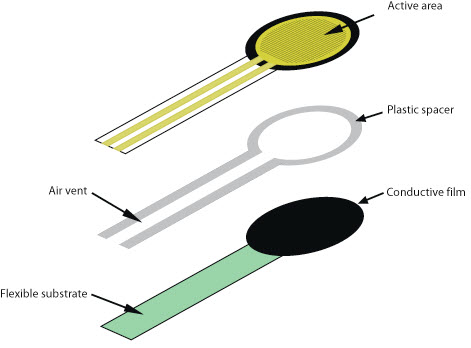
Force Sensing Resistor Layers
If force is applied to a surface of
sensing film, then the particles touches the conducting electrodes and
thus resistance of the film changes. There are several resistive based
sensors but force sensing resistors operate satisfactorily in difficult
environments and also requires a simple interface compared to other
resistive based sensors.
Even though there various types of force
sensors, the force sensing resistors are having several advantages such
as thin size (less than 0.5mm), very low cost and also good shock
resistance. The only disadvantage of FSR sensors is low precision, there
will be approximately 10% or more difference in measurement results.
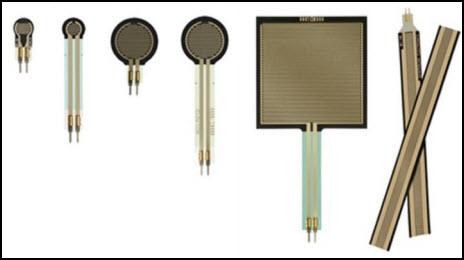
Force Sensing Resistors
Force sensing resistors are called as
(PTF) polymer thick film devices. The resistance of FSR sensors
decreases with increase in pressure applied to its surface.
4-Simple Steps to design Force Sensing Resistor
Force sensing resistor can be designed by following the four simple steps shown below:
1. Gathering
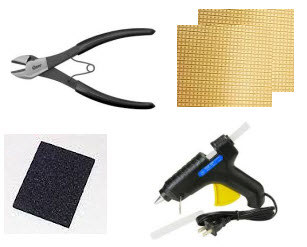
Force Sensing Resistor Components
Gathering the required materials for designing FSR sensors. The materials used for FSR sensor are electrical & electronic components– PCB, conductive foam, wires, solder, hot glue, tools- soldering iron, hot glue gun, cutter.
2. Sizing
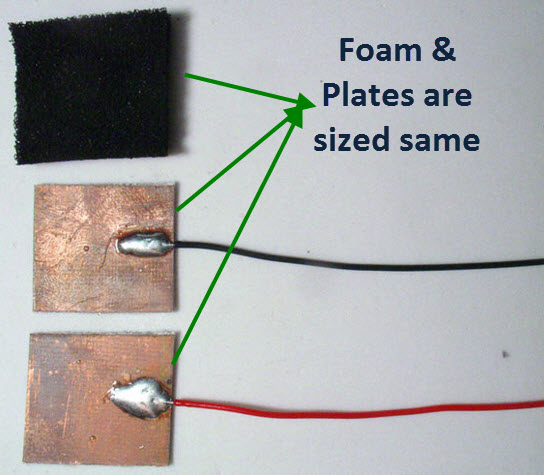
Sizing of Plates & Foam for FSR Sensor
The size of FSR sensors varies based on
application requirements, consider a PCB is cut into two identical
square plates and solder plates with red and black wire as shown in the
figure. Then, cut the conducting foam into the same shape and size of
the plate.
3. Connecting
Now, connect the two plates and conducting foam by outline glue such that, make sure it conducts well.
4. Testing

Force Sensing Resistor Testing
Thus, the FSR sensor can be tested using a multimeter.
Connect the wires of FSR sensor to multimeter without applying any
force on surface of the force sensing resistor the resistance will be
very high. If force is applied to its surface, then the resistance
starts decreasing.
Applications of Force Sensing Resistor
There are numerous applications for
force sensing resistors in various fields such as foot pronation
systems, automobiles like car sensors, resistive touch-pads, musical
instruments, keypads, portable electronics, and so on.
Touch Controlled Load Switch
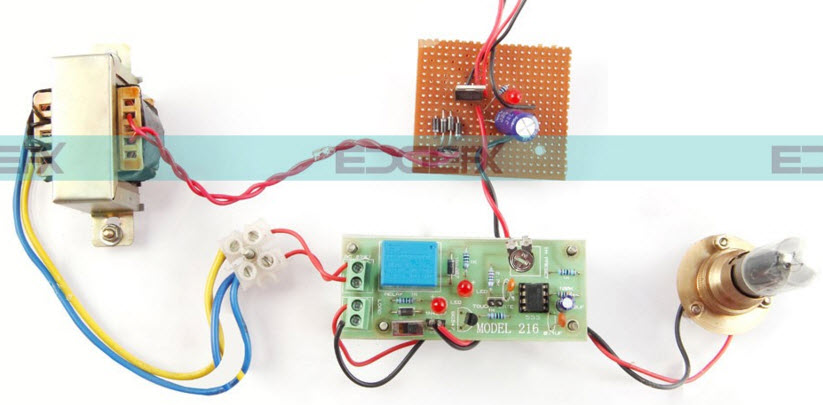
Touch Control Load Switch
The touch controlled load switch project
is designed for controlling any load by touch sensitive switch. The
project uses a 555 timer, relay, diodes, resistors, capacitors, and load
(lamp) which are connected as shown in the block diagram.
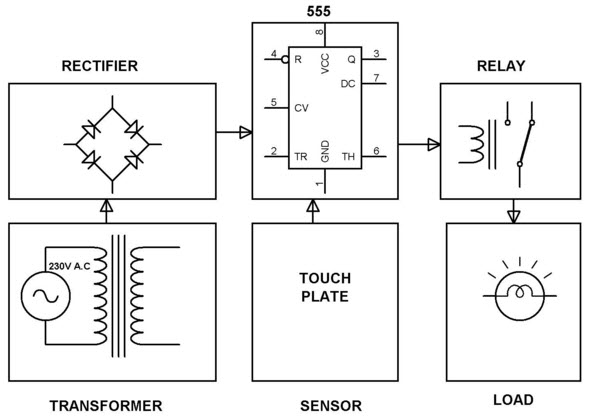
Touch Control Load Switch Block Diagram
The 555 timer is connected in monostable
mode to drive relay based on triggering signal received from touch
plate. The triggering pin of the 555 timer is connected to touch the
plate. If the touch plate is triggered, then the 555 timer
output drives relay for a fixed time duration. The time duration can be
changed by an RC time constant of timer and after a fixed time duration
the load automatically turns OFF. The human body induced supply is used
for developing voltage on touch plate.
Are you interested in developing innovative electronics projects
like scary spider, crazy hat, etc., on your own? Feel free to approach
us by posting your comments, ideas, queries and suggestions in the
comments section below.







No comments:
Post a Comment